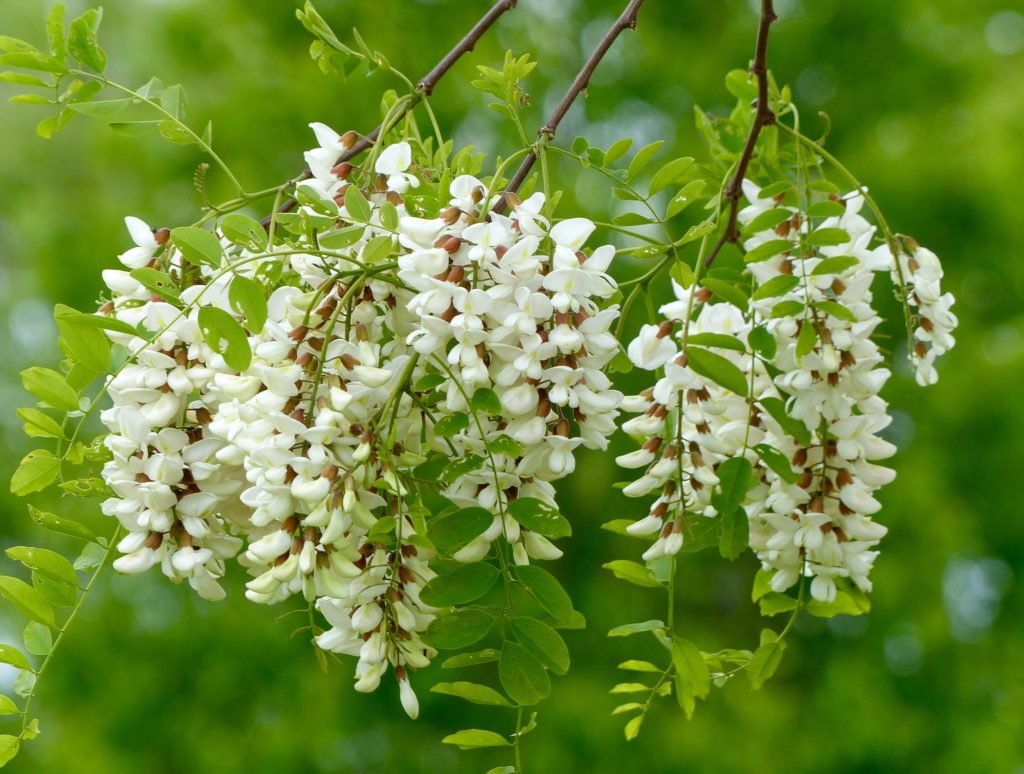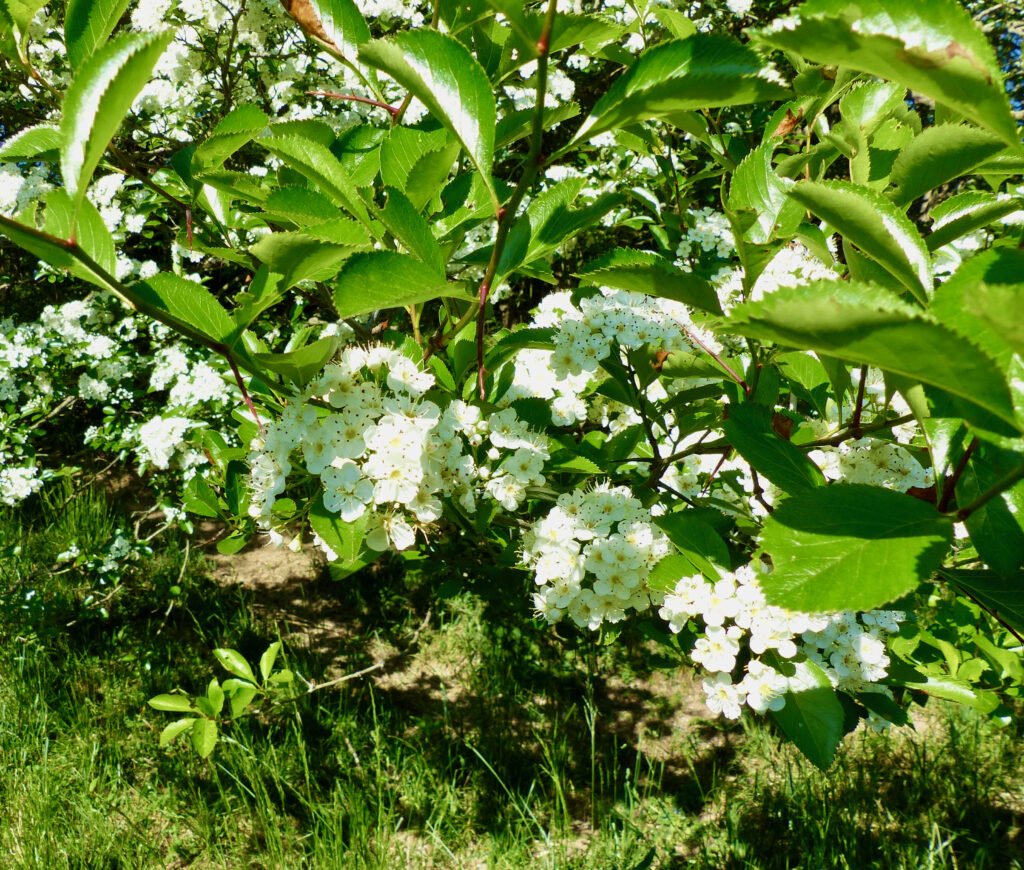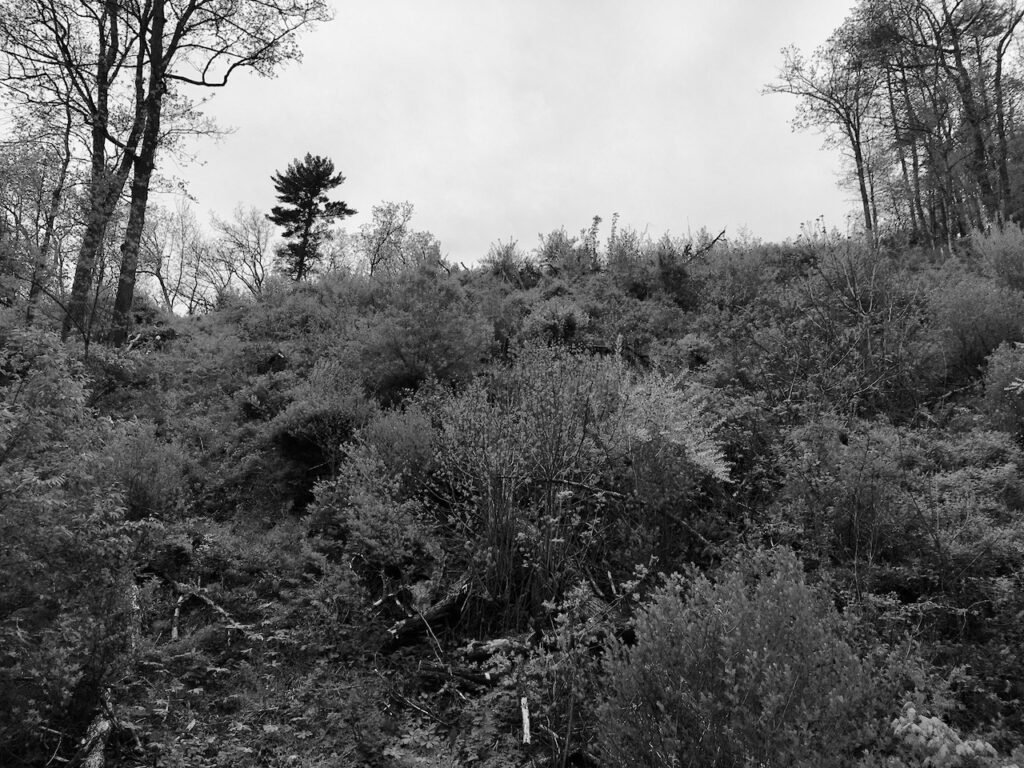Spring Surge of Grass
During the month of May, everything grows like crazy. Here at Whiskey Creek Angus, the grasses and clovers in the pastures grow more in this month than in any other. As I write, the grasses in the hay fields are waist high and their seed heads are emerging.
“It ought to be in the barn,” I tell Jeanne. Of course, it should be in the barn, but the weather doesn’t usually cooperate in May.
We stopped feeding hay several weeks ago, and now it’s time to move the cows to greener pastures. Jeanne stands in one of our newly constructed livestock watering corrals and calls to the cows, “WOOOCK.”
Val, our Border Collie, waits for Jeanne to give him the command to circle beyond the herd. He lies just a few feet from her, his eyes locked on the farthest cow he can see. Border Collies live for this moment. He’s like a tightly wound spring as he waits for the command.
“On out, way out,” she says. The spring releases, and Val takes off like a bolt of lightning to the far side of the herd.
The cows and their calves eagerly move into the corral, and then Jeanne opens the gate to a greener pasture. Val brings in a couple of sets of calves that don’t quite know what’s going on. It only took about two minutes to move seventy head of cattle.

Spring Surge of Flowers
Flowers are bursting out everywhere. Perhaps the most impressive are native trees such as Black Cherry, Black Locust, and Washington Hawthorn. These trees in bloom are pollinator superhighways.



Spring Surge of Birds
On Mother’s Day each year, I spend the day birding. Birding gives me time to reflect on times past and experience the avian migration at its peak. Birders are always birding, even while lying in bed. At 5:33 a.m. at Whiskey Creek Angus, American Robins and Gray Catbirds begin singing—a good start for the day.
Bobolinks, Meadowlarks, and Grasshopper Sparrows are nesting now in our pastures. Tree Swallows and Eastern Bluebirds have eggs in the nesting boxes we put up. One bluebird nest has seven eggs—the most I’ve ever seen in one nest.
Palo Alto and Shenandoah Mountain
This year I hiked in the George Washington National Forest along the North River in a place called Palo Alto. Years ago I saw my first Blackburnian Warbler here. I’ll never forget that moment. He was sitting on a twig high up in a tree, singing his heart out. The sun was shining on his bright orange breast. I don’t know if it was the bright orange that wowed me or the thrill that I could see a four-inch bird 50 feet away, but I was hooked on birding from then on. Every time I go to Palo Alto in May, I see Blackburnian Warblers.
Next, I drove along the ridge of Shenandoah Mountain to Reddish Knob. This is an excellent drive to see warblers and vireos. I was amazed at the number of Black-Throated Blue Warblers. I also saw Canada, Chestnut-Sided, and Black-Throated Green Warblers; Blue-Headed Vireos; Scarlet Tanagers; and Rose-Breasted Grosbeaks.
Finishing up the day I went by the Bald Eagle nest in Swoope, hoping to see a baby. High in the tree, there was something sitting on the side of the huge nest. I saw not one but three large birds with no white heads. Three baby Bald Eagles!
This Mother’s Day I recorded 81 species of birds.


Ghost of the Atlantic Coast Pipeline
En route to Palo Alto, I drove to Brailey Pond, a good birding spot for ducks. The Atlantic Coast Pipeline was planned to cross the road to the pond. I stopped where Dominion Energy had cut down every single tree on a steep slope beside the road. The large dead tree trunks lay in the hundred-foot path of destruction, a stark reminder of the six-year fight to defeat the poorly planned, never-needed, largest, fracked-gas pipeline in American history.
Dominion Energy is currently in the process of negotiating the terms of the easements they purchased along the defeated pipeline route. It is unclear how they will fix the damages or terminate the easements.

Springtime
The dictionary defines springtime as the beginning or flourishing stage of development. If there was a month that captured the most flourishing stages of development, it would have to be May. In the month of May, in the Chesapeake Bay Watershed, life’s energy awakens from winter in all living things; I call it the spring surge. Pastures grow, flowers bloom, birds build nests and lay eggs, we plant our gardens and trees. Springtime and the month of May. They bring so much joy and hope. Hope that what we plant or begin will flourish.
Sequestering Carbon, Harvesting Sunshine, and Building Soil Health
The perfect hay-making weather came—four days with no rain in the forecast and temperatures in the 80s. We cut all our hay down, let the sun dry it, and then baled it into half-ton round bales. And yes, it’s in the barn. The plants in the hayfield sequester carbon from the atmosphere, and we harvest it as hay. We will feed the hay this winter to the cows. Their manure will not only fertilize our pastures but build soil health as well by increasing soil organic matter.


8 Comments
Leave your reply.